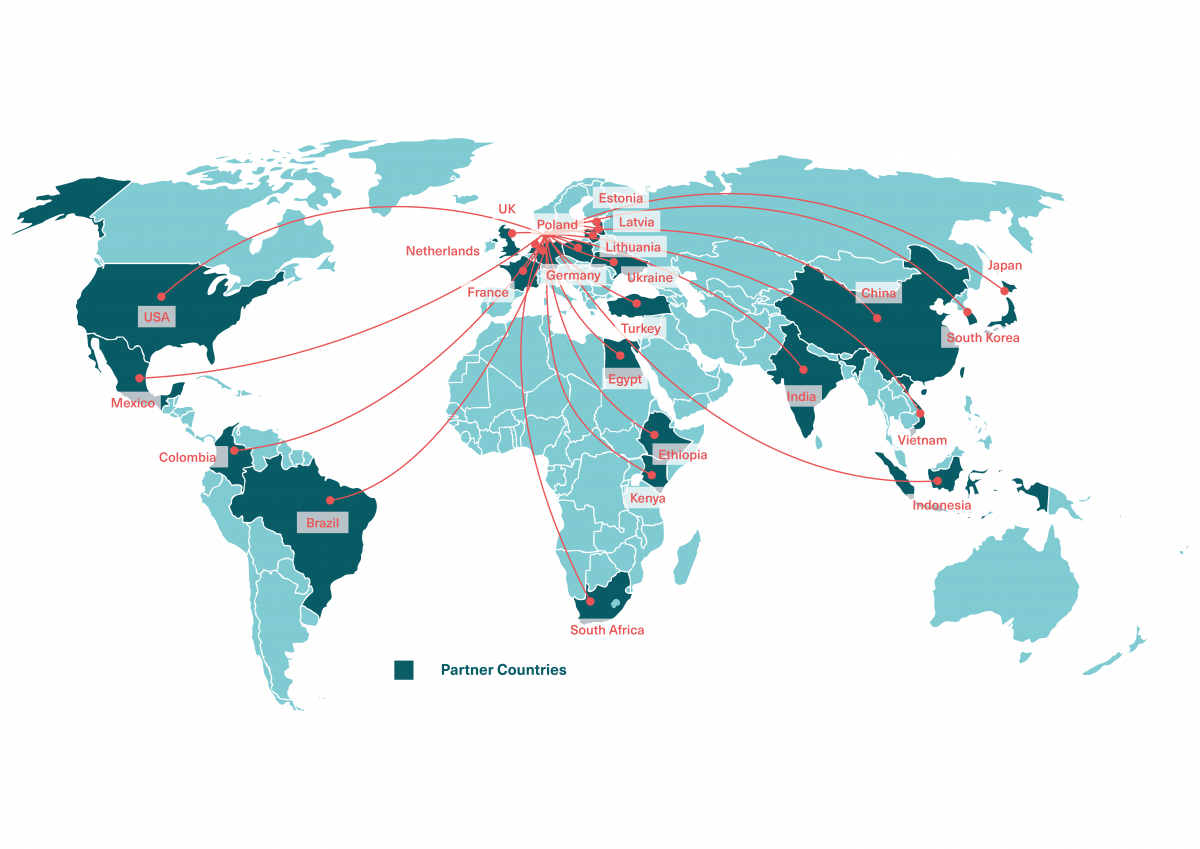Danish experience on green transition can accelerate global green transition
In Denmark, we are experiencing a remarkable transformation of our energy system from black to green. We started more than 45 years ago – due to the oil crisis. From depending entirely on imported fossil fuels, today, we have a world record security of electricity supply of 99.996 per cent with a 50 per cent share of renewables. We have achieved this while maintaining national growth.
Still, we are continuously challenging ourselves with ambitious climate reduction targets. The Danish Government has set the target to reduce greenhouse gas emissions by 70 % by 2030. This target forces us to collaborate across all emission sectors and with multiple stakeholders, including the private sector, think tanks, NGO’s, and research, investment and pension funds. We also seek inspiration within EU member states and in our country partnerships.
Download one-pager about Global Cooperation
24 country partnerships represent 70 per cent of global emissions

In Global Cooperation, we share our experience from the Danish energy transition with the world. By partnering with some of the world's biggest countries and fastest growing economies, we put our expertise to use where it holds the greatest impact. We focus our efforts on Danish core competencies within energy transition.
Because our domestic progress owes to decades of active and persistent policy, we are able to assist our partners in deploying a framework for a cost-efficient energy transition. We do this in close cooperation with The Danish Ministry of Foreign Affairs, including the relevant embassies, the Danish TSO, Energinet, as well as other relevant branch organizations. At the Danish embassies and local partner organizations, energy advisors are posted and supported by colleagues from the Danish Energy Agency.
Our 24 partner countries are China, Mexico, South Africa, Vietnam, Ukraine, Indonesia, Turkey, The USA, South Korea, Japan, The Netherlands, Germany, The United Kingdom, India, Egypt, Kenya, France, Poland, Ethiopia, Estonia, Latvia Lithuania, Brazil and Colombia. Together, they represent 70 per cent of global CO2-emissions.
Collaboration is key to a sustainable development
We share our experiences, tools and build capacity in green energy transition. Building local capacity is at the center of our activities. In many of our partnerships we strive to identify the most cost-effective green path to reach - or even go beyond - the partner country’s nationally determined greenhouse gas emission targets set out in the Paris Agreement. The solutions are manifold and based on the following Danish core competencies:
- Long-term energy modelling and scenarios
- Integration of renewable energy in the energy system
- Wind power – offshore and onshore
- Energy efficiency – industry and buildings
- District heating
A vital prerequisite for green transition is the regulatory and policy framework. Therefore, we also share our best practice so our partners can be inspired, and design and implement effective and efficient regulation. A long-term framework supporting the green transition creates a sound business environment, fosters innovation, makes economic sense, lowers consumer prices, reduces carbon emissions, and expands the global market for clean energy technology.
Cooperation with our partner countries takes place on a national, regional and/or local level as well as with non-state actors. It comes with no commercial strings attached.
The partnerships are anchored in the Danish Energy Agency and implemented in close collaboration with the Ministry of Foreign Affairs.
Explore identified green paths and effects of our partnerships here. Learn more about each of our country cooperations or find information and tools based on the Danish energy model